After more than a decade as a bottom-tier franchise, the Raiders broke out last season and are suddenly the favorites to win their first AFC West title in 15 years. The team added a few veterans that figure to help an already potent offense and, understandably, devoted its draft to defense.
The Raiders also took care of cornerstones from the much-praised 2014 draft via extensions. However, all of this optimism comes against what could be a strange backdrop — especially for a Super Bowl contender. The Raiders’ decision to move to Las Vegas, eventually, will make Oakland Coliseum games interesting this season.
While the Raiders have yet to prove they can win the big games necessary to contend with the Patriots, they may have as good of a chance as anyone to topple the defending champions based on their roster construction. And they should be poised to be a top-tier AFC contender for the foreseeable future.
Notable signings:
- Jared Cook, TE: Two years, $10.6MM. $5MM guaranteed.
- Cordarrelle Patterson, WR: Two years, $8.5MM. $5MM guaranteed. $2MM available via incentives.
- Marshall Newhouse, T: Two years, $3.5MM. $500K guaranteed.
- Jon Condo, LS: One year, minimum salary benefit. $300K guaranteed.
- Jelani Jenkins, LB: One year, $1MM. $100K guaranteed.
- EJ Manuel, QB: One year, minimum salary benefit.
- IK Enemkpali, DE: One year, contract terms unknown.
Somewhat interestingly, Oakland chose to address its stronger unit in free agency while leaving its defense largely unchanged until the draft. Cook and Patterson could bring explosiveness the Raiders have not enjoyed at these positions in many years. While neither is a surefire bet for consistency, both figure to enhance the Raiders’ offensive capabilities.
 The Raiders haven’t presented many imposing matchups from the tight end position in the modern era. Cook lost time to injury in 2016, but his late-season re-emergence coincided with some of the best play of Aaron Rodgers‘ career. Oakland acquiring Cook on a $5.3MM-per-year accord looks like a team-friendly deal.
The Raiders haven’t presented many imposing matchups from the tight end position in the modern era. Cook lost time to injury in 2016, but his late-season re-emergence coincided with some of the best play of Aaron Rodgers‘ career. Oakland acquiring Cook on a $5.3MM-per-year accord looks like a team-friendly deal.
The athletic tight end surpassed 600 yards in three seasons despite having suboptimal quarterbacks throwing to him. As the No. 3 option behind Amari Cooper and Michael Crabtree, the 30-year-old Cook will be in position to threaten defenses in a way Derek Carr‘s previous tight ends couldn’t. This acquisition will help compensate for the Raiders’ lack of a steady No. 3 wideout.
Oakland’s Patterson signing stands to benefit the offense more so from a field-position standpoint. A two-time All-Pro kick returner with the Vikings, Patterson did not become what Minnesota’s brass envisioned as a receiver. While a potentially dangerous gadget player — especially on an offense possessing the kind of weaponry Oakland’s does — Patterson is no lock to beat out incumbent Seth Roberts for the Raiders’ top slot job. Patterson’s prodigious return acumen will put the Raiders in better position to score, and like Cook, his skill set is one the team hasn’t enjoyed much lately.
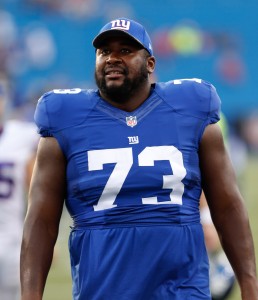 Newhouse resides in a strong position to start. A Packers draft choice during Reggie McKenzie‘s Green Bay years, Newhouse has been given plenty of first-string chances — including 20 first-unit games with the Giants from 2015-16 — but has not distinguished himself much and figures to be the clear weak link on the Raiders’ starting line.
Newhouse resides in a strong position to start. A Packers draft choice during Reggie McKenzie‘s Green Bay years, Newhouse has been given plenty of first-string chances — including 20 first-unit games with the Giants from 2015-16 — but has not distinguished himself much and figures to be the clear weak link on the Raiders’ starting line.
The Raiders did not attempt to upgrade much at backup quarterback, with Manuel having been one of the more disappointing first-round passers in years. Carr coming off a broken leg that torpedoed the Silver and Black’s season, the Raiders passing on more proven backups like Chase Daniel, Nick Foles or Ryan Fitzpatrick to sign Manuel for the league minimum is curious. Connor Cook continues to develop but wouldn’t be viewed as an above-average backup if he were to win the job, at least based on his emergency-circumstance work sample last season.
Jenkins would seemingly have the inside track to replace Malcolm Smith on the outside. He signed on a prove-it deal and given the Raiders’ lack of options opposite Bruce Irvin in their base sets, the former Dolphins starter should have a chance to showcase his abilities this season. But Jenkins has trended in the wrong direction since posting a 110-tackle 2014. Pro Football Focus tabbed him as one of the league’s worst linebackers last season. Also considering the Raiders’ gamble on unproven players in the middle, off-ball linebacker profiles as a risk since the team is without both of its nickel-package ‘backers from 2016.
Notable losses:
- Nate Allen, S
- Daren Bates, LB
- D.J. Hayden, CB
- Andre Holmes, WR
- Austin Howard, T: Released
- Taiwan Jones, RB: Released
- Stacy McGee, DL
- Matt McGloin, QB
- Latavius Murray, RB
- Perry Riley, LB
- Mychal Rivera, TE
- Malcolm Smith, LB
- Brynden Trawick, S
- Menelik Watson, T
- Dan Williams, DT: Released
Murray’s 12 rushing touchdowns represented the third-most by a Raiders back during a season in franchise history. The Raiders discussed a new deal with Murray, but judging by their refusal to match Murray’s Vikings-friendly agreement, felt like they could replicate the fifth-year player’s production elsewhere. Oakland returns its top four offensive linemen from 2016, and that quartet played a big role in the former sixth-round pick’s success.
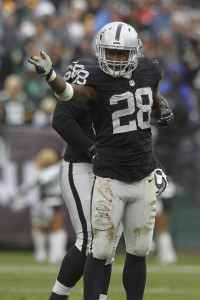 The 27-year-old runner presented an interesting case for a re-up, especially at the $5MM-per-year rate (on a team-friendly setup) he agreed to in Minnesota, considering he has only been a starter for two years and has just 543 career carries. But the Raiders went in a different direction.
The 27-year-old runner presented an interesting case for a re-up, especially at the $5MM-per-year rate (on a team-friendly setup) he agreed to in Minnesota, considering he has only been a starter for two years and has just 543 career carries. But the Raiders went in a different direction.
Neither Hayden nor Smith worked out to the Raiders’ liking. Hayden was one of McKenzie’s biggest missteps while running the Raiders, and Smith — despite being the central figure at non-rush linebacker for the Raiders over the past two seasons — did not impress. The 49ers gave Smith a big raise (five years, $26.5MM) with guarantees that tie him to the team for at least the next two seasons. Nevertheless, the Raiders paid Jenkins far less to replace Smith, who is now lost for the season with a torn pectoral muscle.
T.J. Carrie picked up the slack at nickel after the ineffective and injury-prone Hayden went down midway through last season, and Oakland added 2017 sub-package pieces in the first two rounds of the draft. Oakland did let a promising defender leave without bringing in a replacement, though, when McGee left for Washington. Although McGee missed some time with injuries last season, the defensive tackle was productive. He started nine games after being a rotational presence in his three previous Bay Area seasons.
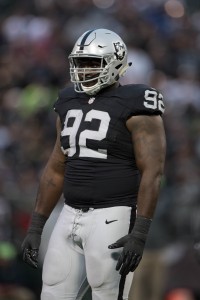 The Raiders did not address this position in free agency and cut Dan Williams, a quality run-stopper in 2015 but a player whom the team benched last season. Justin Ellis remains as a Williams replacement, but on passing downs, the Raiders could be light on interior pass-rushing ability.
The Raiders did not address this position in free agency and cut Dan Williams, a quality run-stopper in 2015 but a player whom the team benched last season. Justin Ellis remains as a Williams replacement, but on passing downs, the Raiders could be light on interior pass-rushing ability.
Del Rio specifically addressed this facet of his defense after the season, one that ended with the Raiders ranking 32nd in sacks (25) despite employing defensive player of the year Khalil Mack. But the team lost two players and only used a third-round pick on a replacement. However, the Raiders selected Mario Edwards and Jihad Ward in the second round of the previous two drafts. Oakland is counting on each uncertain commodity in 2017.
Jack Del Rio said Newhouse had a leg up on Howard in the right tackle competition over the summer, and the Raiders subsequently released Howard. The Raiders’ right tackle the past two seasons, Howard was coming off shoulder surgery. He played well at right tackle in 2015, after a down ’14 at guard, but was slowed by injuries last season. The 30-year-old’s release saddles the Raiders with $1.5MM in 2017 dead money, although that’s the only dead-money figure on the Raiders’ ’17 payroll.
Trades:
- Acquired RB Marshawn Lynch and a 2018 sixth-round pick from the Seahawks in exchange for a 2018 fifth-round pick.
- Acquired a 2017 seventh-round pick (No. 221; DB Shalom Luani) and a 2017 seventh-round pick (No. 231; T Jylan Ware) from the Cardinals in exchange for a 2017 sixth-round pick (No. 208; S Johnathan Ford).
After a lengthy process, the Raiders pulled the trigger on a trade for Lynch. They are not paying him what the Seahawks did. Lynch pocketed more than $12MM in 2015 as part of a Seahawks extension. His new contract is more in line with the veteran running back market: two years, $9MM, $2.35MM guaranteed. Nothing is guaranteed beyond this season. The Raiders could save $6MM in 2018 by cutting Lynch, who is almost certainly not going to be part of his hometown franchise’s move to Las Vegas.
 The Raiders will upgrade in raw talent from Murray to Lynch, who stampeded to four straight Pro Bowls in Seattle. However, it’s uncertain what kind of form the 31-year-old bruiser will be in after a year off and more than 2 1/2 years removed from his most recent healthy season. Lynch missed nine games in 2015 and saw Thomas Rawls look far better than he did for the Hawks that season, with the cornerstone ball-carrier averaging just 3.8 yards per carry.
The Raiders will upgrade in raw talent from Murray to Lynch, who stampeded to four straight Pro Bowls in Seattle. However, it’s uncertain what kind of form the 31-year-old bruiser will be in after a year off and more than 2 1/2 years removed from his most recent healthy season. Lynch missed nine games in 2015 and saw Thomas Rawls look far better than he did for the Hawks that season, with the cornerstone ball-carrier averaging just 3.8 yards per carry.
Oakland still has multipurpose-type backs in DeAndre Washington and Jalen Richard — each of whom averaged more than five yards per handoff as rookies — so they could still form a committee around Lynch as they did with Murray. Lynch, though, brings the kind of short-yardage punch the younger backs don’t, and behind a stacked Raiders interior offensive line, the starter should be a potent weapon around the goal line.
Draft picks:
- 1-24: Gareon Conley, CB (Ohio State)
- 2-56: Obi Melifonwu, S (UConn)
- 3-88: Eddie Vanderdoes, DT (UCLA)
- 4-129: David Sharpe, OL (Florida)
- 5-168: Marquel Lee, LB (Wake Forest)
- 7-221: Shalom Luani, DB (Washington State)
- 7-231: Jylan Ware, T (Alabama State)
- 7-242: Elijah Hood, RB (North Carolina)
- 7-244: Treyvon Hester, DT (Toledo)
Expected to go in the top half of the first round prior to a sexual assault allegation that surfaced during draft month, Conley received a life raft from the Raiders. And after it was announced charges won’t come the cornerback’s way in connection with the aforementioned allegation at a Cleveland hotel, the Raiders figure to have the full services of a talent that otherwise would not have been available to them. Conley will provide the Raiders with vital depth and supply a young cornerback prospect to a team in need of them.
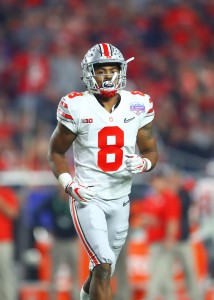 Conley could push Sean Smith and David Amerson for time at some point. Neither returning starter has any guaranteed money owed to them beyond 2017, and Smith is already oddly running with the second team in camp. So, this pick could put a cornerback contingent — one that helped permit an NFL-worst 61 completions of at least 20 yards last season — on notice.
Conley could push Sean Smith and David Amerson for time at some point. Neither returning starter has any guaranteed money owed to them beyond 2017, and Smith is already oddly running with the second team in camp. So, this pick could put a cornerback contingent — one that helped permit an NFL-worst 61 completions of at least 20 yards last season — on notice.
Melifonwu also has veterans in front of him, with the Raiders having Reggie Nelson and Karl Joseph back, but the UConn product could be tabbed for starting duty as soon as next season. Nelson’s two-year contract expires after this his age-34 season. A Combine freak who worked out as a corner for some teams during the pre-draft process, Melifonwu is an old-school Raiders selection hearkening back to the Al Davis speed-obsessed era. The 6-4 talent could profile as a sub-package cog early; the Raiders did not have much safety depth coming into the draft and they are currently without Keith McGill due to a fractured foot.
Conley and Melifonwu inject some high-end athleticism and depth to a Raiders secondary that didn’t have many options for years.
 The Raiders selected an interior defender on Day 2 of the draft for a third straight year. A UCLA talent, Vanderdoes did not boast impact stats during his four-year career (4.0 sacks, 13.5 tackles for loss) but does have a 3-4 end body type (6-4, 305 pounds) for a team that hired John Pagano — the Chargers’ DC who utilized that front during his San Diego stay. Vanderdoes figures to add to a largely unproven rotation.
The Raiders selected an interior defender on Day 2 of the draft for a third straight year. A UCLA talent, Vanderdoes did not boast impact stats during his four-year career (4.0 sacks, 13.5 tackles for loss) but does have a 3-4 end body type (6-4, 305 pounds) for a team that hired John Pagano — the Chargers’ DC who utilized that front during his San Diego stay. Vanderdoes figures to add to a largely unproven rotation.
Lee has an opportunity for early playing time despite being selected on Day 3. The former Demon Deacons tackler is the latest of McKenzie’s Day 3 linebacker picks. The GM is emulating former boss Ted Thompson by not over-investing in non-rush linebackers. Plenty of late-round and UDFA players populate this position group. Lee’s already seeing first-team reps and could be the latest young talent installed there.
Extensions and restructures:
- Derek Carr, QB: Extended through 2022. Five years, $125.05MM. $40MM guaranteed.
- Gabe Jackson, G: Extended through 2022. Five years, $56MM. $26MM guaranteed (unknown if figure is full guarantee).
- Marshawn Lynch, RB: Agreed to new contract following trade. Two years, $9MM. $2.35MM guaranteed. $5.9MM available via incentives.
- Lee Smith, TE: Accepted pay cut. Created $750K in cap space by reducing 2017 base salary of $1MM to $1MM base salary and $1MM roster bonus.
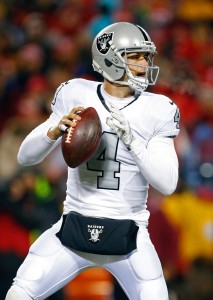 The late-June week that brought extensions for Carr and Jackson represented a historic span for the Silver and Black, whose previous payroll became dominated by outside hires. The Raiders and these two cornerstones reaching extension agreements doubles as a pivotal point in the franchise’s timeline. Many years have passed since the team had young talents of this caliber willing to make commitments like this.
The late-June week that brought extensions for Carr and Jackson represented a historic span for the Silver and Black, whose previous payroll became dominated by outside hires. The Raiders and these two cornerstones reaching extension agreements doubles as a pivotal point in the franchise’s timeline. Many years have passed since the team had young talents of this caliber willing to make commitments like this.
The first young, franchise-level quarterback that’s ended up signing a Raiders extension in decades, Carr admitted he left money on the table to help his teammates — mentioning Jackson, Mack and Amari Cooper, who becomes extension-eligible next year — remain with the franchise. Carr stands to bring in more money once the Raiders move to Las Vegas, since Nevada does not have a state income tax. But given the Raiders’ struggles at quarterback post-Rich Gannon, they were probably all too happy to pay the 26-year-old Pro Bowler. The highest of this deal’s cap figures comes at $25MM in 2018. The Raiders have been big on frontloading deals under McKenzie, and Carr’s did not deviate from the blueprint.
Although he was not one of the three Raiders offensive linemen selected for the most recent Pro Bowl, Jackson has continually impressed. He remained a stalwart interior blocker after moving from left to right guard last season. His extension locks in the Raiders’ formidable interior O-line core through 2019. Jackson’s extension elevates his 2017 cap number to $10.47MM, and following a $10.5MM figure next year, the frontloaded deal does not have an eight-figure cap number attached to it. All of the guaranteed money in Jackson’s accord comes in 2017 and ’18. Kelechi Osemele and Rodney Hudson‘s UFA contracts were structured the same way.
Other:
- Learned NFL owners approved plan to relocated to Las Vegas.
- Promoted Todd Downing to offensive coordinator to replace Bill Musgrave.
- Hired former Chargers DC John Pagano as assistant head coach/defense.
- Exercised 2018 fifth-year option for DE Khalil Mack ($13.846MM).
- Signed 17 undrafted rookie free agents.
- Donald Penn is holding out in hopes of a reworked contract
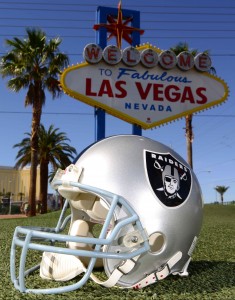 The elephant in the room could double as a dark cloud over an otherwise promising Raiders season. While the team thrived in 2016 as a Vegas prospect loomed, now that it’s official, the Oakland atmosphere could be strange. The Raiders have become the only NFL franchise that’s agreed to ditch its original market twice, and their lame-duck experiment has the league discussing alternative options if 2017 goes poorly. The Nevada venture marks a controversial move, ditching one of the league’s most identifiable local fanbases for an unknown market. But the record $750MM in public money secured made 31 owners view this opportunity as too good to bypass.
The elephant in the room could double as a dark cloud over an otherwise promising Raiders season. While the team thrived in 2016 as a Vegas prospect loomed, now that it’s official, the Oakland atmosphere could be strange. The Raiders have become the only NFL franchise that’s agreed to ditch its original market twice, and their lame-duck experiment has the league discussing alternative options if 2017 goes poorly. The Nevada venture marks a controversial move, ditching one of the league’s most identifiable local fanbases for an unknown market. But the record $750MM in public money secured made 31 owners view this opportunity as too good to bypass.
The Raiders will also become a rare contending team that’s agreed to leave its market, making for a fascinating backdrop in a season where the franchise figures to deploy a Super Bowl contender. No post-AFL-NFL merger departure agreement has occurred with a city’s team coming off a playoff berth until the Raiders’ decision. Additionally, the last time a team planned on staying in its previous city for multiple years while a stadium was being built elsewhere came when the Houston Oilers attempted to do so. They ended up leaving Houston for Tennessee after one season, an ugly 1996 campaign, and playing the following two slates in a college stadium while the current Titans venue was constructed.
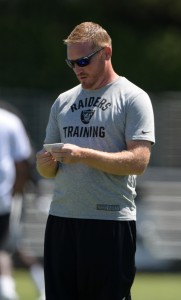 For a team that subjected its local fanbase to more than a decade of futility only to field a contender Oakland at the 11th hour, it could bring some complications for said championship push.
For a team that subjected its local fanbase to more than a decade of futility only to field a contender Oakland at the 11th hour, it could bring some complications for said championship push.
The Raiders made a curious move in jettisoning the coordinator who oversaw a No. 6 ranking and retaining one who piloted a defense to a No. 26 finish for a second straight season. But other teams expressed interest in hiring Downing as OC, so the Raiders promoted the 37-year-old position coach. Musgrave caught on with the Broncos as QBs coach but once again spent two seasons as OC for a Del Rio-coached team. He was not retained after two Jaguars seasons during the 2000s. Pagano will add another key voice to a team that already has a defensive-minded head coach, although it might cut into Ken Norton Jr.‘s authority to some degree.
 Mack was one of a few easy fifth-year decisions a front office had to make involving a 2014 draftee. While the reigning defensive player of the year having to wait behind Jackson for an extension makes for strange optics, other teams have not committed to their 2014 first-round picks yet either. Nevertheless, Mack is on one of the most franchise-friendly agreements in football. He stands to make $5.94MM this season and $13.84MM in 2018.
Mack was one of a few easy fifth-year decisions a front office had to make involving a 2014 draftee. While the reigning defensive player of the year having to wait behind Jackson for an extension makes for strange optics, other teams have not committed to their 2014 first-round picks yet either. Nevertheless, Mack is on one of the most franchise-friendly agreements in football. He stands to make $5.94MM this season and $13.84MM in 2018.
Jackson’s extension also left Penn as the fourth-highest-paid Raiders lineman despite having made the most Pro Bowls of anyone on the unit. Set to make $5.8MM in base salary this season, Penn wants top-10 left tackle money. The two-year, $14MM deal has him well off that pace — especially given how much certain teams committed to lesser tackles in free agency. The Raiders do not have a replacement close to Penn’s caliber, so this is an interesting tactic from the 11th-year blocker. McKenzie might not be keen on redoing a two-year contract, but the team’s status as a Super Bowl contender and the gulf between Penn and the rest of Oakland’s tackle contingent could make the GM pay up to satisfy his disgruntled employee.
Top 10 cap charges for 2017:
- Derek Carr, QB: $15.731,691
- Kelechi Osemele, G: $13,500,000
- Gabe Jackson, G: $10,647,844
- Sean Smith, CB: $9,500,000
- David Amerson, CB: $8,500,000
- Donald Penn, T: $7,150,000
- Michael Crabtree, WR: $7,000,000
- Bruce Irvin, LB: $7,000,000
- Rodney Hudson, C: $6,950,000
- Austin Howard, T: $6,400,000
Oakland has its best roster in place since its 2002 AFC championship campaign, but the team must navigate a tough AFC West and prove it can beat contenders. The Silver and Black went 2-5 against winning teams last season, although two of those losses came without Carr. But a Chiefs team in apparent transition and a Broncos outfit that may be constrained by a lower-level offense could set the Raiders up for a playoff home game.
While that would certainly stand to be awkward considering the Vegas decision, the Raiders have a chance at a special season. Their Super Bowl window appears to be opening.
Information from Over the Cap and Roster Resource was used in the creation of this post. Photos courtesy of USA Today Sports Images and via Pro Football Rumors on Instagram.
Probation nation !!!